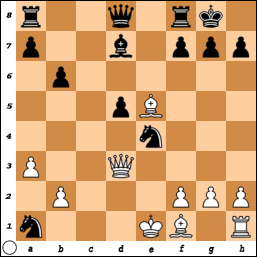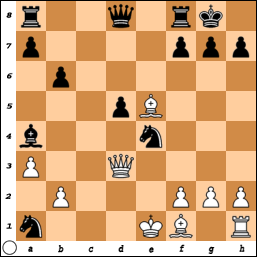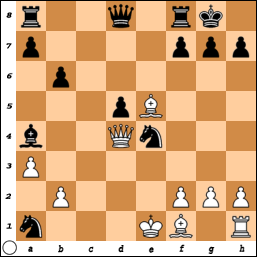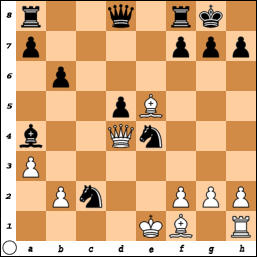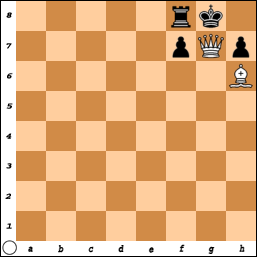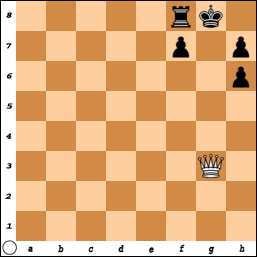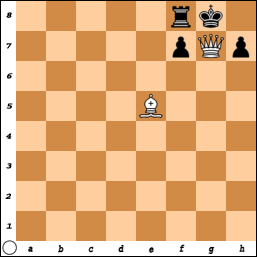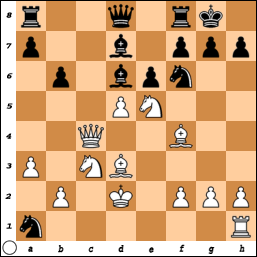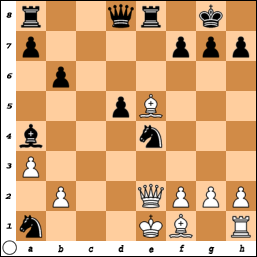Tanner-kun wrote:
I think it would be best if I resigned. I made a lot of bad moves. xD
No problem. Good game, and I look forward to playing with you again sometime.

Tanner-kun wrote:
I kept trying to get into this kind of position
and wasn't thinking to much about other moves. maybe that was a mistake
May I offer a suggestion? I used to play like that, trying to set up a specific mate, and I would fall into the same problem of getting too tied up in the mate setup, and I'd forget to watch for other moves. Since then, I've found that it's better not to plan out a checkmate. If you can see a potential checkmate, chances are that your opponent can see it as well. If it's easy to do without any sacrifice, or if the checkmate is guaranteed, then go for it! However, if it takes more that two moves, forget about it because by the time you get to it, the board might have changed, or your opponent will have countered it already.
Instead of planning for a mate, I find it better to play each move, one-by-one. I try to get some kind of advantage out of every move I make, whether that means getting a piece advantage, getting a board control advantage, or getting an initiative advantage. Of course, you still have to look several moves ahead to see what the consequences of your move will be, but if you take one move at a time, you're less likely to slip up. And if you can keep gaining small advantages here and there, eventually your opponent will slip up, or an opportunity will present itself to gain a large advantage, and that's when you strike. Remember, most chess games end in resignations, not in checkmates. It's a lot easier to gain enough of an advantage that your opponent resigns than it is to force a checkmate.
sstimson wrote:
Just to clarify Forks you player even before that move
14 Qb3-c4 /
Nb4-c2+ King and Rook
16 Nc3-e4 /
e6xd5 Queen and Knight
17 Qc4-d3 /
Nf6xe4+ King and Pawn
which brings us to
20 Qd3-d4 /
Na1-c2+ King and Queen
So this comment
sstimson wrote:
You love using Forks and tanner loves being forked
Was just stating the obvious
True enough. That game definitely had a number of forks.
sstimson wrote:
White Suggestions
By the way for white a better move
instead of 16 Nc3-e4 / which allows the pawn fork above
play Qc4-a2 Killing the Knight
That would get the black knight, but it would also get the white queen stuck at a1, making her pretty much useless.
A better move for white is 16 Bf1-d3, developing the bishop and taking the black knight on the next turn with the rook.
sstimson wrote:
and
better move for 17 Qc4-d3
would again be 17 Qc4-a2 getting the queen out of danger and removing the Knight
Maybe, however black can still take the white knight 17 Nf6xe4+, and then can chase the king around with bishops and knights. With the queen sitting at a2, she's pretty much powerless to defend the king.
sstimson wrote:
One more
while 20 Qd3-d4 does threaten the Bishop at A4, it again sets up a fork
A better move might be Qd3-e2 eying Qe2-g4 and maybe Qg4xg7# Mate
Black follows 20 Qd3-e2 with Rf8-e8 to threaten the white bishop. If white moves 21 Qe2-g4, black takes the white bishop. If white moves the bishop on move 21, then black moves his knight at e4 to pin and take the white queen.
Really, there isn't much white can do after moving 16 Nc3-e4.
sstimson wrote:
Black Suggestions
at the End before your new fork
I thought you might play either Qd8-h4 with Qh4xf2 in the future
or Qd8-g5 with Qg5-c1 in mind
Qd8-h4 is countered with g2-g3, and allows another route for the white bishop to get out.
Qd8-g5 is countered a number of ways, the easiest being f2-f4.
Either way, unless you're guaranteed a checkmate, I find it's always better to go for a piece or board advantage than to try and set up for one specific mate.
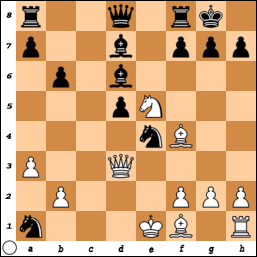

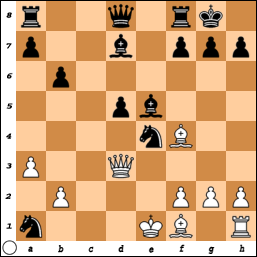
 - Get your Detective Conan bobbleheads today! -
- Get your Detective Conan bobbleheads today! - 
